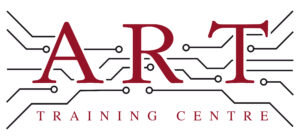Definition
Solder Mask is a protective layer applied to printed circuit boards (PCBs) during the manufacturing process. It is a component that prevents solder from bridging between conductive paths, thereby reducing the risk of short circuits. Solder mask also protects the copper traces from oxidation and physical damage, ensuring the longevity and reliability of the electronic device. It typically comes in green, but can be found in various colours for aesthetic purposes.
How It’s Used in the Industry
In electronics assembly, solder mask is applied after the PCB is etched and cleaned. The process begins with the application of a liquid solder mask, which is then cured using ultraviolet light or heat. This creates a durable, insulating layer over the copper traces. During soldering, the mask prevents solder from adhering to unwanted areas, ensuring precise connections. For rework, technicians may need to remove or repair the solder mask to access components. Understanding solder mask application is crucial for both trainees and experienced professionals, as it significantly impacts the quality and reliability of electronic assemblies.
History & Origins
Solder mask became common in electronics manufacturing in the 1960s as the demand for reliable and compact electronic devices grew. Early PCBs lacked such protection, leading to frequent failures. The development of standards by organisations like IPC helped establish best practices for solder mask application. Advancements in materials and processes have since improved the effectiveness of solder masks, making them essential for modern electronics. Over the years, the technology has evolved, allowing for better adhesion and performance in various environmental conditions.
Variations
There are several types of solder mask, including liquid photoimageable (LPI) and dry film solder masks. LPI is applied as a liquid and cured under UV light, allowing for intricate designs and fine lines. Dry film solder mask, on the other hand, is a pre-sensitised film that is laminated onto the PCB. Both types serve the same purpose but differ in application methods and suitability for various PCB designs. Understanding these variations helps technicians choose the right solder mask for specific projects.
Modern Applications
Today, solder mask is critical in the production of both surface mount and through-hole components. It plays a vital role in ensuring the quality and reliability of electronic assemblies by preventing solder bridging and protecting against environmental factors. Compliance with IPC standards is essential, as it guarantees that solder masks meet performance criteria. Additionally, solder mask is increasingly important in advanced assembly techniques, where precision and reliability are paramount in high-tech applications.
Practical Tips & Training
When working with solder mask, ensure proper ventilation and use personal protective equipment, as some materials can be hazardous. Inspect solder mask application for uniformity and coverage, as inconsistencies can lead to defects. Familiarise yourself with tools like UV curing units and inspection microscopes for quality checks. Structured training and certification in solder mask application are vital for developing a thorough understanding of its importance in electronics manufacturing and ensuring high-quality outcomes.


